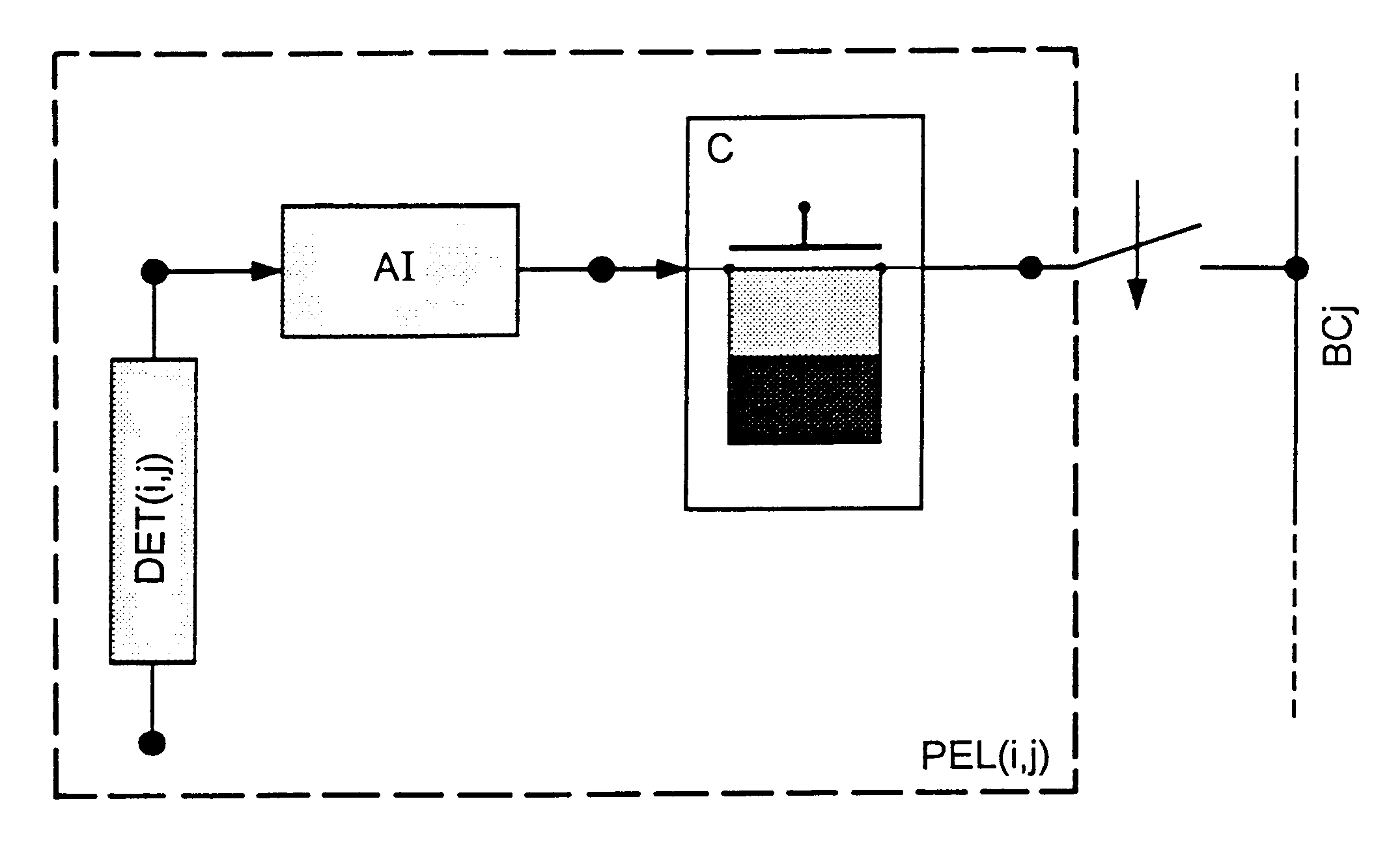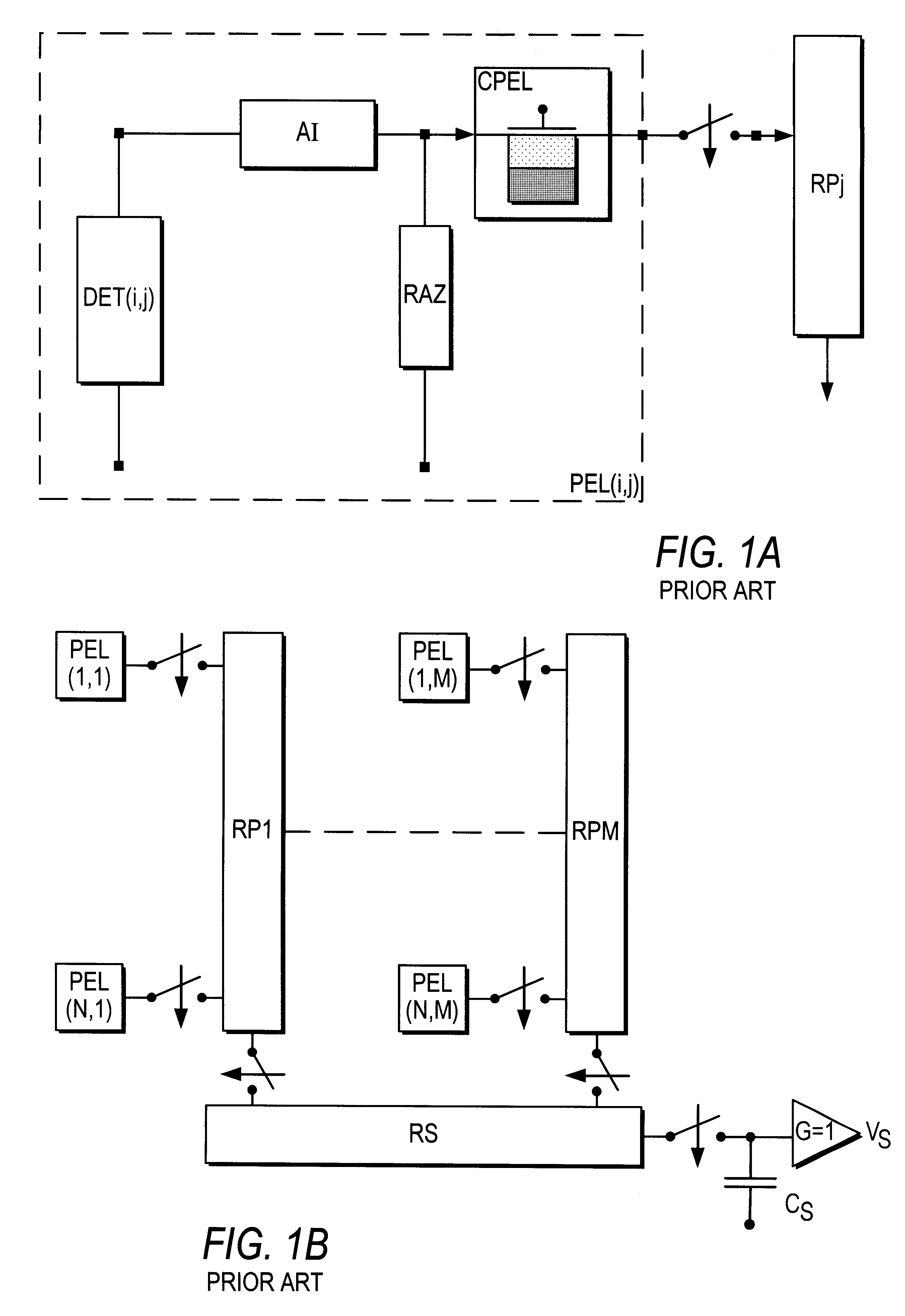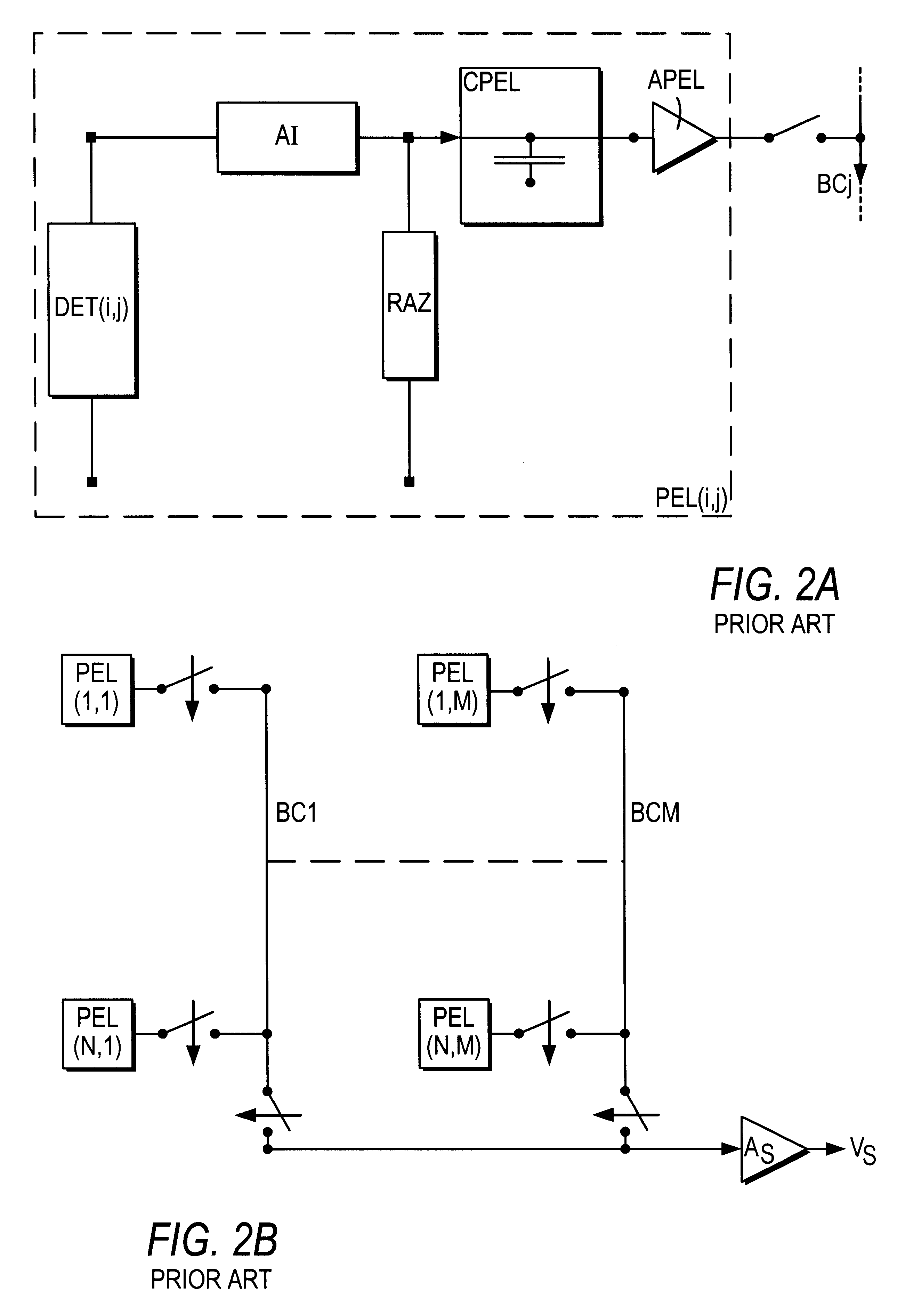Device and process for reading a matrix of photonic detectors
a technology of photonic detectors and matrixes, which is applied in the direction of radio frequency controlled devices, instruments, television systems, etc., can solve the problems of preventing the production of sub-images, reading circuits, and incompatibility with random addressing of detectors
- Summary
- Abstract
- Description
- Claims
- Application Information
AI Technical Summary
Benefits of technology
Problems solved by technology
Method used
Image
Examples
Embodiment Construction
The present invention concerns a device for reading a matrix of photonic detectors which delivers a current whose intensity varies according to the incident flux, the exposure time being identical and synchronous for all the detectors, characterised in that it comprises a set of elementary points for reading the signals delivered by each detector, in that the quantity processed is the charge, each elementary point effecting a preintegration of the current delivered by a corresponding detector. A reading of the resulting quantity of charges by a charge amplifier is effected, so as to condition the signals delivered by the matrix of detectors and to multiplex them to at least one information processing chain. The charge amplifier is external to the elementary point in the case of a matrix of detectors. In the case of a linear array of detectors, the charge amplifier is situated either outside or inside the elementary point.
Advantageously, the photonic detectors are quantal detectors o...
PUM
 Login to View More
Login to View More Abstract
Description
Claims
Application Information
 Login to View More
Login to View More - R&D
- Intellectual Property
- Life Sciences
- Materials
- Tech Scout
- Unparalleled Data Quality
- Higher Quality Content
- 60% Fewer Hallucinations
Browse by: Latest US Patents, China's latest patents, Technical Efficacy Thesaurus, Application Domain, Technology Topic, Popular Technical Reports.
© 2025 PatSnap. All rights reserved.Legal|Privacy policy|Modern Slavery Act Transparency Statement|Sitemap|About US| Contact US: help@patsnap.com



